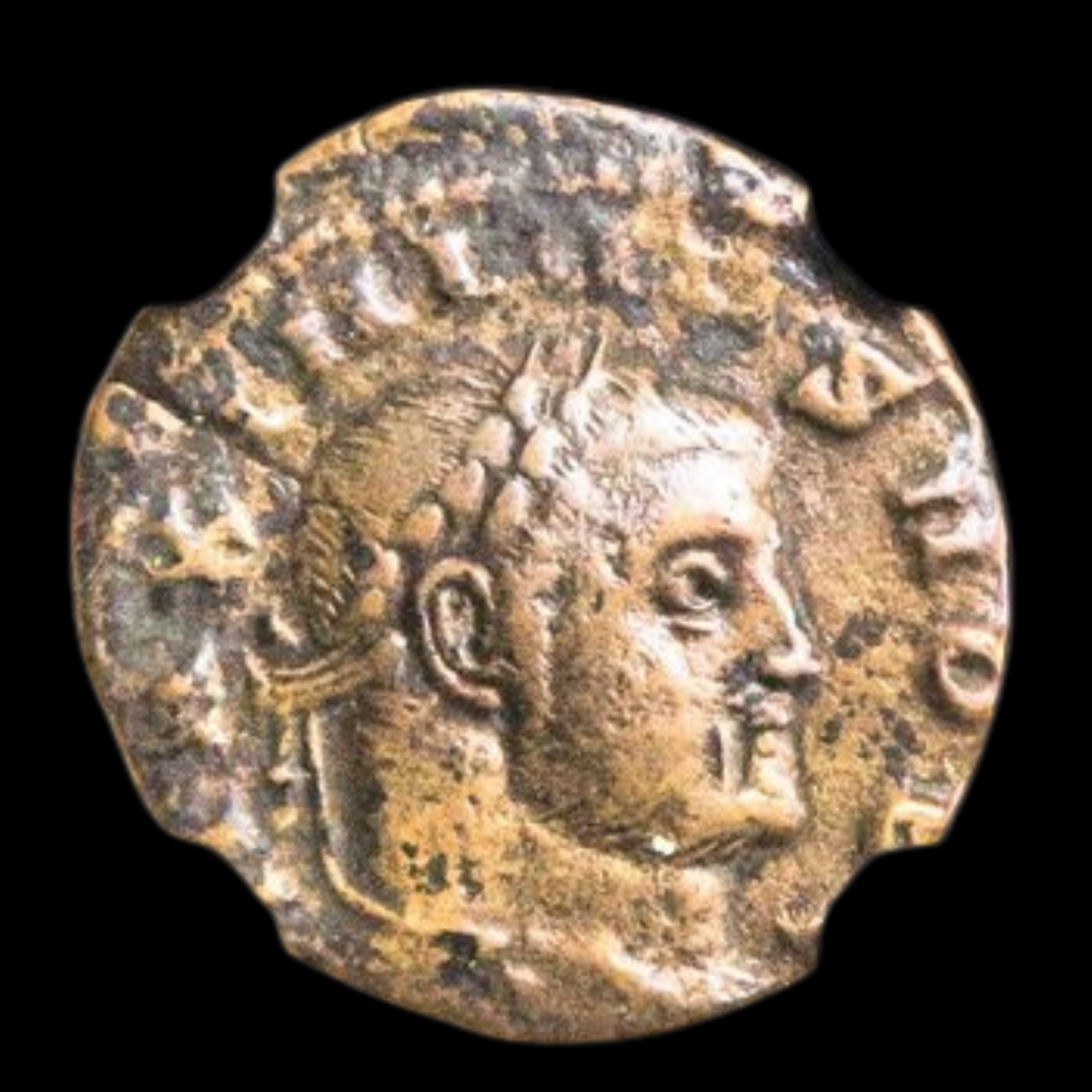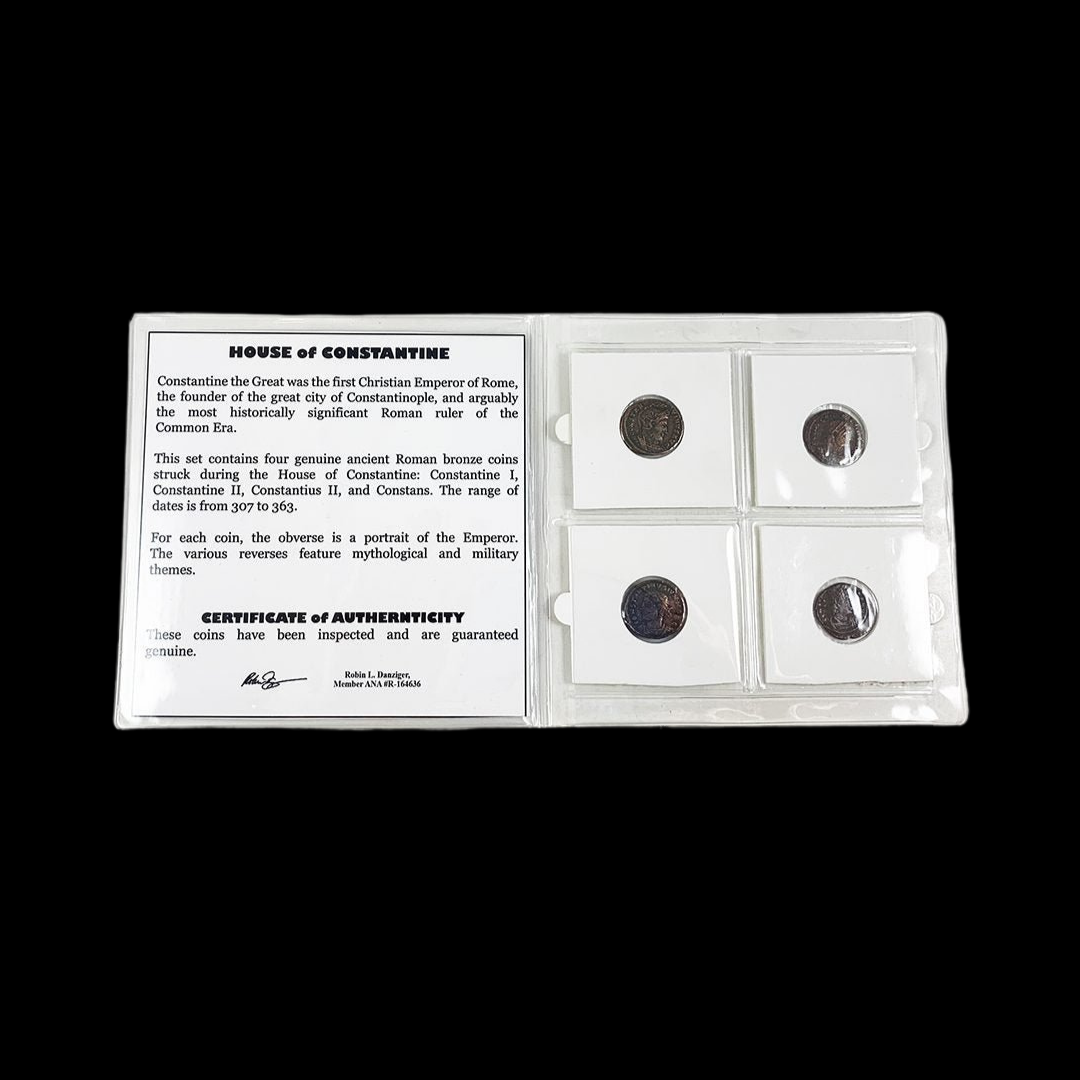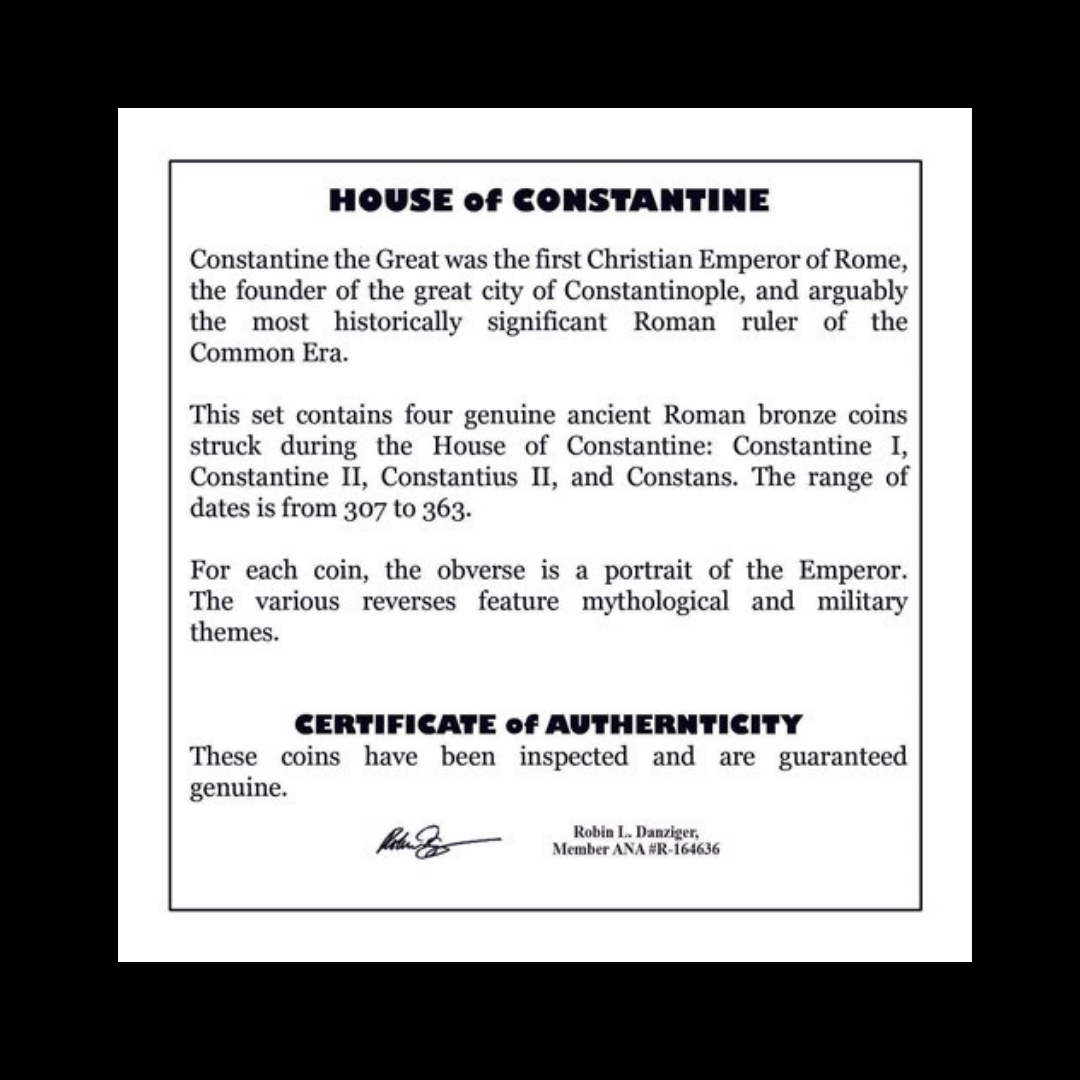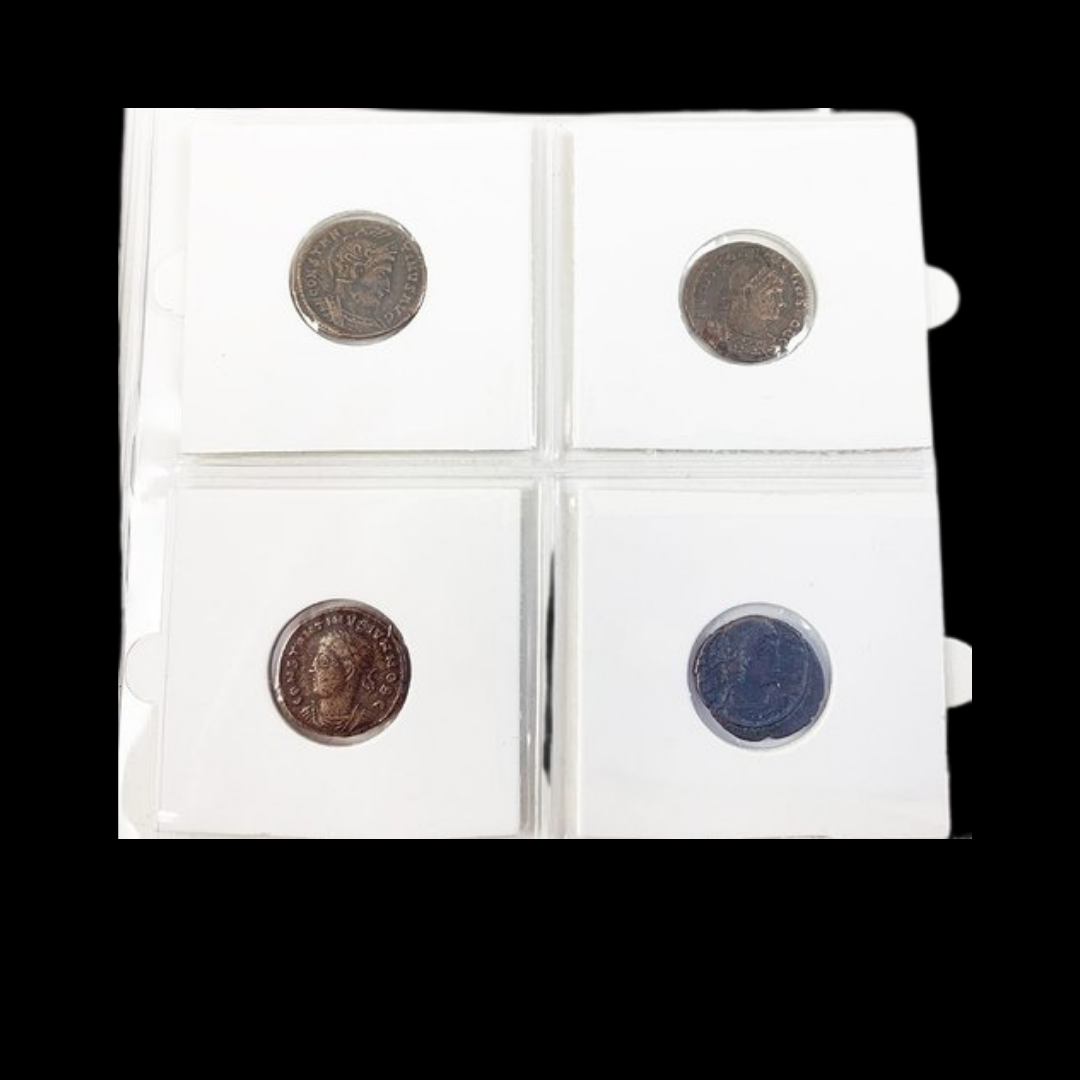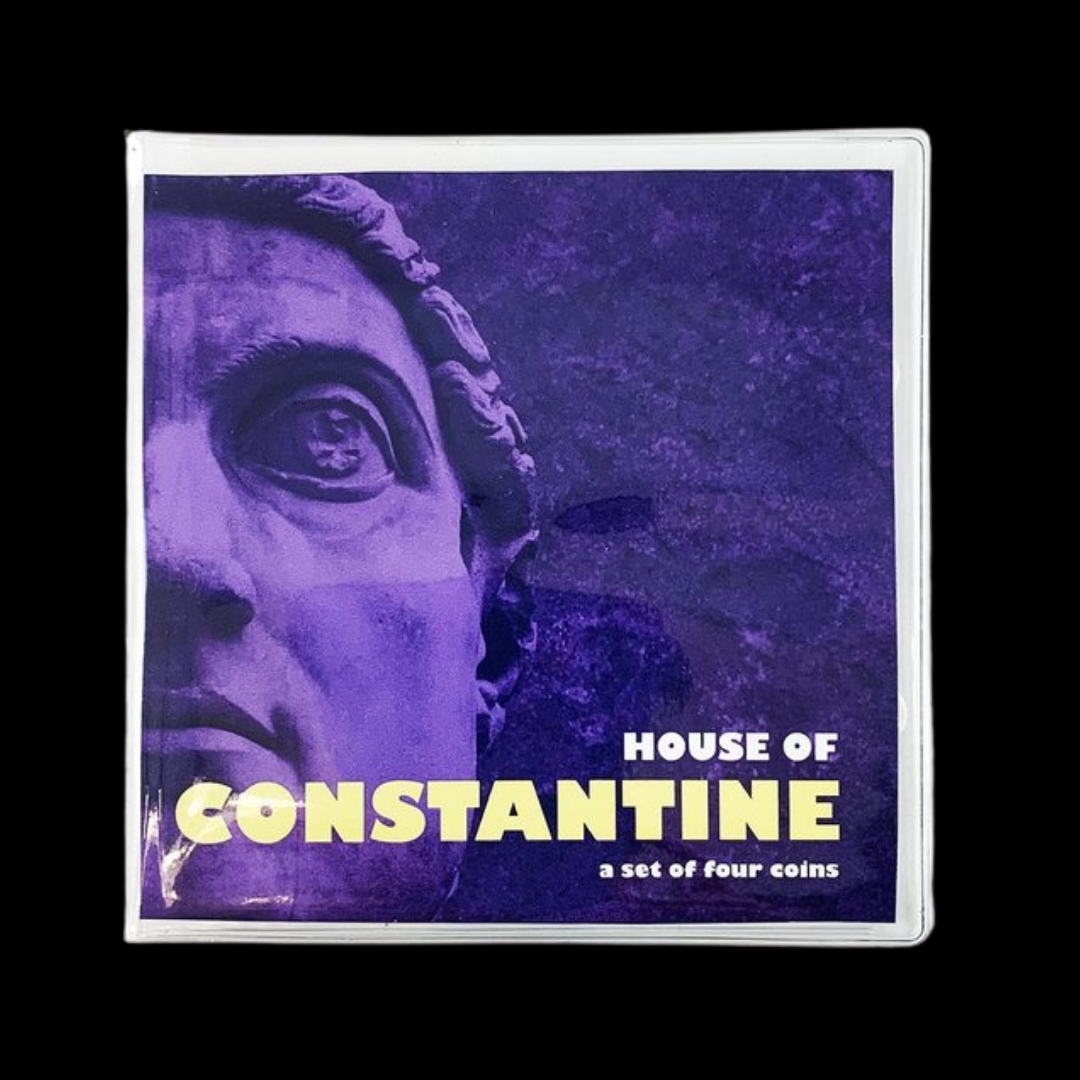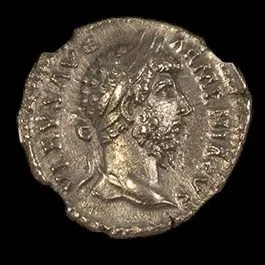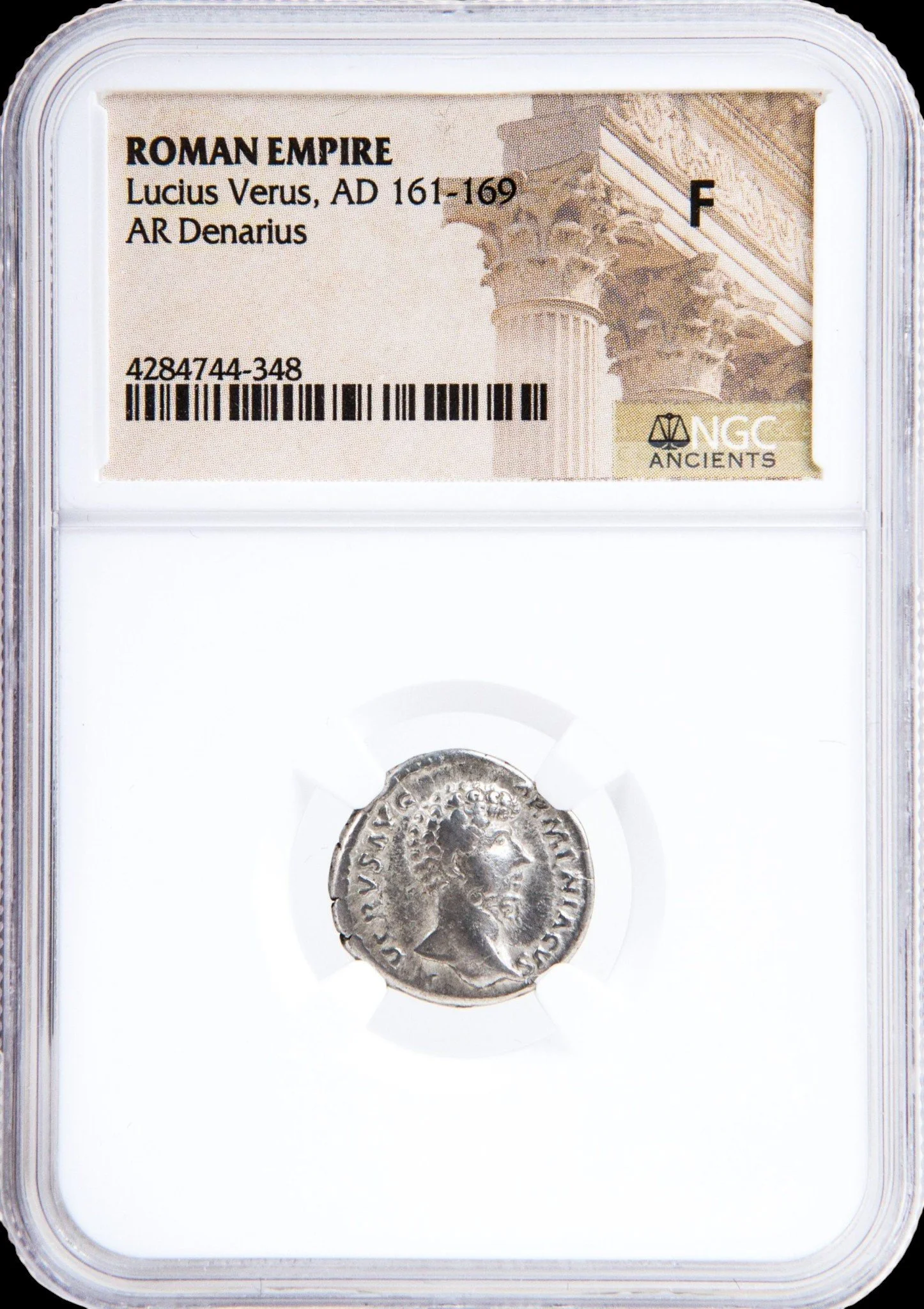 Image 1 of 6
Image 1 of 6

 Image 2 of 6
Image 2 of 6

 Image 3 of 6
Image 3 of 6

 Image 4 of 6
Image 4 of 6

 Image 5 of 6
Image 5 of 6

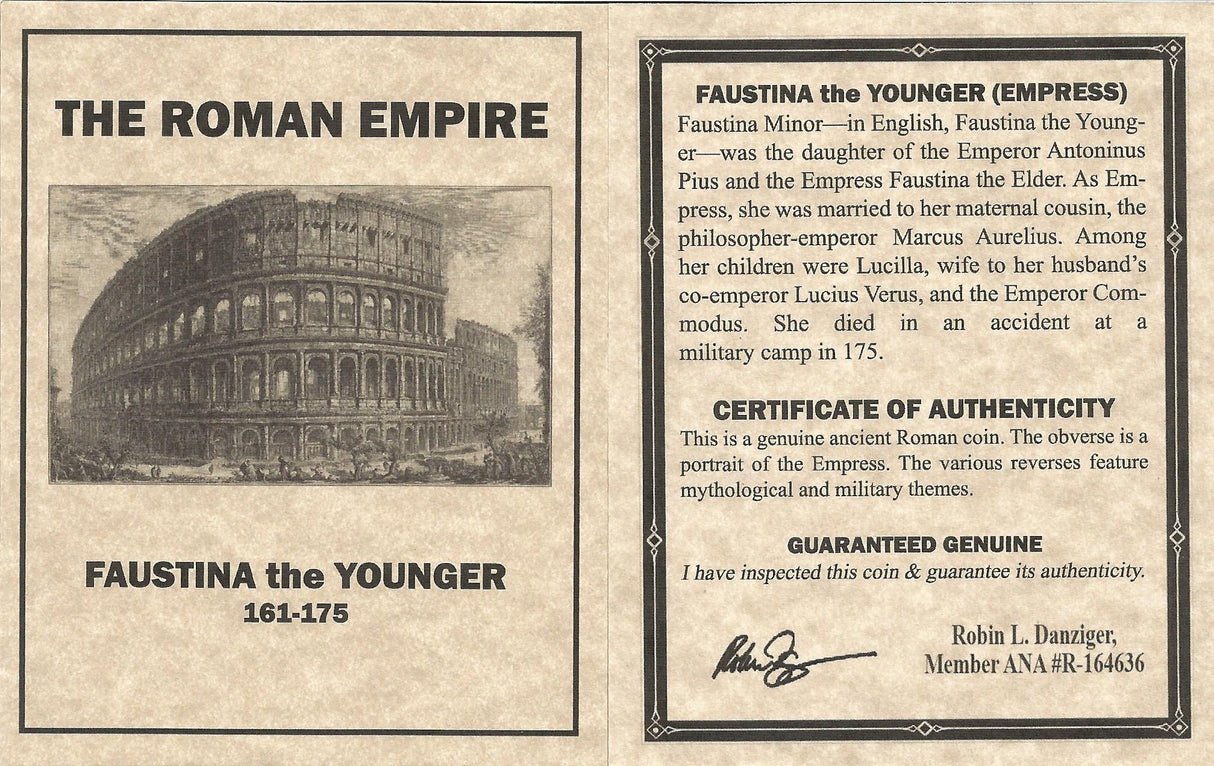 Image 6 of 6
Image 6 of 6







Roman Silver Coin of Empress Faustina the Younger (about 1,850-1,870 years ago)
The coins shown are representative examples of the grade and type, but not the actual specimens for sale. For details on NGC’s grading standards and definitions, please refer to our NGC Grading page.
This silver antoninianus depicts Faustina the Younger, an influential Roman empress who was born into the imperial family as daughter of Emperor Antoninus Pius and later married her cousin, the philosopher-emperor Marcus Aurelius. This coin exemplifies how imperial women were portrayed on Roman coinage and demonstrates their importance in establishing dynastic legitimacy during the height of Rome's golden age.
Coin Description:
Front side: Portrait of Empress Faustina the Younger facing right, typically showing her with an elaborate coiffure characteristic of Antonine-era imperial women, with Latin inscription giving her name and titles
Back side: Likely depicts a female deity such as Venus, Juno, Ceres, or a personification of virtues like Fecunditas (Fertility) or Concordia (Harmony), with accompanying Latin text
Technical Details:
Silver composition (though antoniniani of this period contained decreasing amounts of silver)
Denomination: Antoninianus (valued at two denarii)
NGC certified in protective slab
Minted between approximately 161-175 AD
Condition as certified by NGC
Historical Significance: Faustina the Younger played a crucial role in the Antonine dynasty, connecting two of Rome's most respected emperors through blood and marriage. As daughter of Antoninus Pius and wife to Marcus Aurelius, she helped strengthen the non-hereditary succession system of the "Five Good Emperors" period. Despite rumors of infidelity that appear in historical sources, Marcus Aurelius showed her remarkable devotion, granting her the title "Mother of the Camp" (Mater Castrorum) in recognition of her popularity with the legions. After her death in 175 AD while accompanying her husband on campaign in Asia Minor (modern Turkey), Marcus had her deified—an honor reflected on coins with the inscription "DIVA FAUSTINA." Her legacy lived on through her many children, including her son Commodus who would succeed his father as emperor.
The coins shown are representative examples of the grade and type, but not the actual specimens for sale. For details on NGC’s grading standards and definitions, please refer to our NGC Grading page.
This silver antoninianus depicts Faustina the Younger, an influential Roman empress who was born into the imperial family as daughter of Emperor Antoninus Pius and later married her cousin, the philosopher-emperor Marcus Aurelius. This coin exemplifies how imperial women were portrayed on Roman coinage and demonstrates their importance in establishing dynastic legitimacy during the height of Rome's golden age.
Coin Description:
Front side: Portrait of Empress Faustina the Younger facing right, typically showing her with an elaborate coiffure characteristic of Antonine-era imperial women, with Latin inscription giving her name and titles
Back side: Likely depicts a female deity such as Venus, Juno, Ceres, or a personification of virtues like Fecunditas (Fertility) or Concordia (Harmony), with accompanying Latin text
Technical Details:
Silver composition (though antoniniani of this period contained decreasing amounts of silver)
Denomination: Antoninianus (valued at two denarii)
NGC certified in protective slab
Minted between approximately 161-175 AD
Condition as certified by NGC
Historical Significance: Faustina the Younger played a crucial role in the Antonine dynasty, connecting two of Rome's most respected emperors through blood and marriage. As daughter of Antoninus Pius and wife to Marcus Aurelius, she helped strengthen the non-hereditary succession system of the "Five Good Emperors" period. Despite rumors of infidelity that appear in historical sources, Marcus Aurelius showed her remarkable devotion, granting her the title "Mother of the Camp" (Mater Castrorum) in recognition of her popularity with the legions. After her death in 175 AD while accompanying her husband on campaign in Asia Minor (modern Turkey), Marcus had her deified—an honor reflected on coins with the inscription "DIVA FAUSTINA." Her legacy lived on through her many children, including her son Commodus who would succeed his father as emperor.


